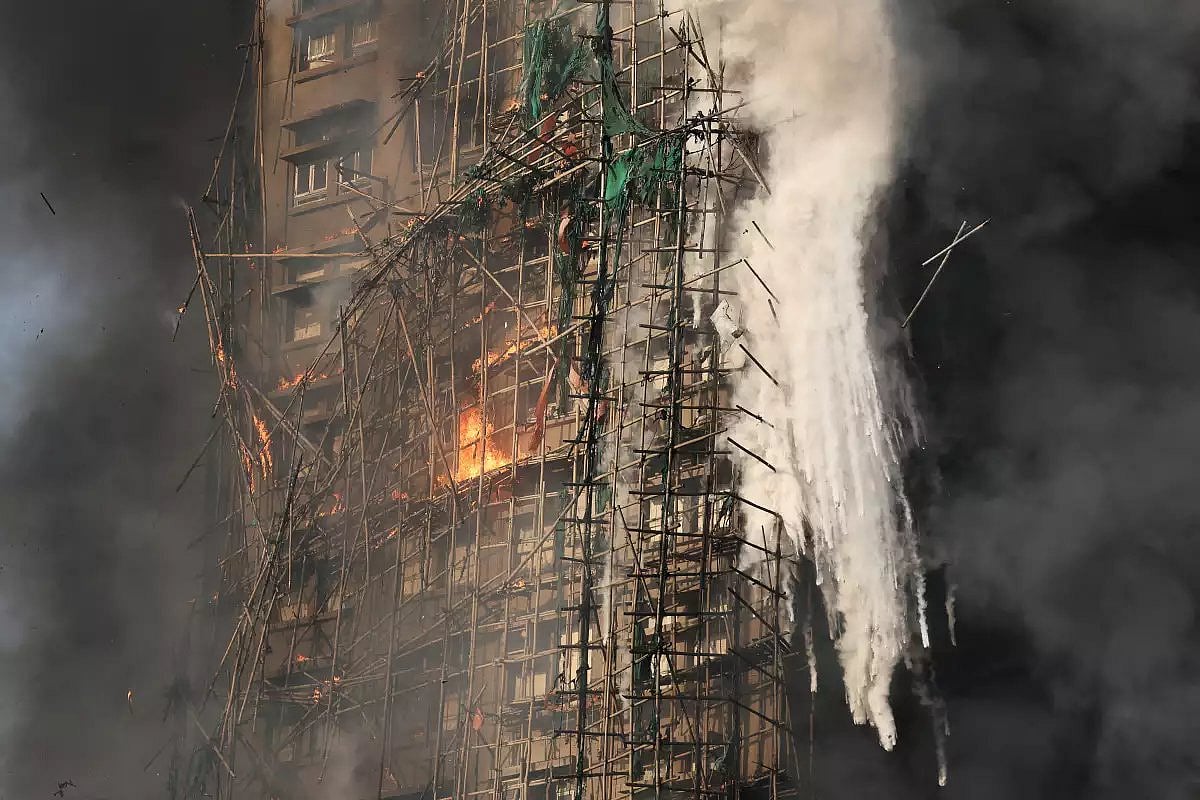Bamboo spiders: Hong Kong blaze exposes hidden dangers of bamboo scaffolding
It’s flexible, strong and cheaper than steel and aluminium: but it has its downsides

Bamboo scaffolding remains a ubiquitous sight across Hong Kong's skyline.
They blanket skyscrapers, renovation sites, and even pop-up cultural venues.
However, the deadly fire on Wednesday (November 26, 2025) in Tai Po, which has killed dozens and scores still missing, brought renewed scrutiny to the use of bamboo scaffolding.
The incident also highlights several downsides of relying on this traditional material in modern urban construction.
Local media reports also cited bamboo’s vulnerability to rapid fire spread as a key risk factor.
Cultural roots, economic value
Despite modern alternatives, around 80% of scaffolds in the city still use this ancient material, a practice rooted in over a century of tradition.
Hong Kong’s dense urban environment favors bamboo’s unique properties: it’s lightweight (half the weight of steel), highly flexible to withstand typhoons, and adaptable to irregular building shapes.
Skilled “bamboo spiders” erect it rapidly using nylon ties — no heavy machinery needed — making it ideal for tight spaces and quick jobs.
Culturally, it preserves a craft passed down generations, symbolising the city’s blend of heritage and pragmatism.
Cost-benefit
Bamboo excels in economics: it’s a fraction of steel's cost (HK$100/m² vs. HK$210/m²), six times faster to erect, and 12 times faster to dismantle.
A 2002 research by Wu found bamboo’s cost variation at just 5% over budget, versus higher for metal, yielding superior overall performance at current prices.
Fang et al. (2003) ranked bamboo higher across flexibility, speed, and affordability metrics (e.g., 0.882 vs. metal's 0.822), as per Science Direct.
Risks and returns
Returns include low upfront costs and rapid deployment, boosting project timelines in a fast-paced city.
Risks involve safety: bamboo’s variability leads to accidents (23 deaths since 2018), inferior fire resistance, and less durability for high-rises.
Fu’s study notes metal’s superior safety but higher expense; a comparative analysis confirms metal safer overall, though with expert oversight, bamboo is viable.
Hong Kong’s 2025 partial phase-out for public projects reflects this balance.
The fire quickly engulfed multiple high-rise buildings partly because the bamboo scaffolding acted as a “conduit”, allowing flames to climb swiftly across the exterior facades.
Local news outlets such as the South China Morning Post pointed out that while bamboo scaffolding is deeply embedded in Hong Kong’s construction culture due to its flexibility and cost-effectiveness, it poses significant fire safety challenges.
The paper noted that the combustible nature of bamboo scaffolds can worsen disasters and complicate firefighting efforts, especially in dense, vertical environments where escape routes are limited, as per a New York Times report.
Gradual replacement
CNN also echoed this concern, stating that despite bamboo’s benefits, the material’s flammability remains a critical safety drawback.
CNN highlighted calls among experts for increased regulation and a gradual replacement of bamboo scaffolding with more fire-resistant alternatives like metal scaffolds to prevent similar tragedies in the future.
Reuters similarly reported on the fire’s role in bringing the spotlight back to Hong Kong’s bamboo scaffolding tradition.
It noted that while scaffolding made from bamboo is cheaper and faster to install, this cost saving comes at the expense of higher fire risks and durability issues.
Reports also cited the government’s plans to phase out bamboo scaffolding in certain construction projects to improve safety standards.
Such reports reveal a consensus that the November fire exposed the dangerous downsides of bamboo scaffolding, emphasising an urgent need for policy change, stricter safety oversight, and investment in safer construction materials to protect residents and emergency responders.
Network Links
GN StoreDownload our app
© Al Nisr Publishing LLC 2025. All rights reserved.